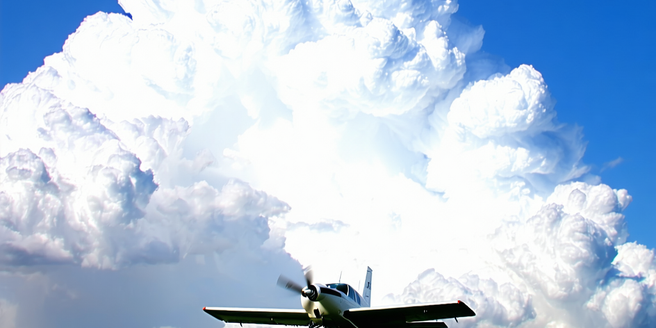
Understanding Different Types of Cloud Formations
Cloud formations are diverse and impact aviation significantly. Recognizing these formations can aid in flight planning and safety. Stratocumulus clouds, often low and rolling, suggest a warm front, which might bring stable weather, while towering cumulus or cumulonimbus clouds indicate potential thunderstorms, turbulence, and severe weather conditions. For pilots, understanding cloud formations can be a critical component of their training and ongoing education. High-level clouds, such as cirrus, usually signal fair weather. Familiarity with these formations aids pilots in assessing weather conditions quickly and making informed decisions. By understanding cloud types, aviation professionals can increase awareness of potential hazards, ensuring safer travels. Gaining proficiency in cloud identification not only helps in immediate weather assessment but also supports long-term climatic studies crucial for future aviation advancements.
How Clouds Affect Aircraft Performance
Clouds play a pivotal role in influencing aircraft performance by creating different flying conditions. Low visibility in foggy conditions necessitates reliance on instruments rather than visual cues. Turbulence found in and around cumulonimbus and convective clouds can affect an aircraft’s stability and passenger comfort. Icing is a significant threat when flying through certain types of clouds, increasing weight and reducing lift. Rain-laden clouds imply potential hydroplaning during landings. Strong winds associated with some cloud formations can also impact takeoffs and landings. Understanding these effects is key to effective flight planning. Pilots must adjust routes, altitudes, and speeds in response to cloud-induced conditions. Also, recognizing weather patterns helps prevent fuel inefficiencies. Thus, pilots’ training emphasizes understanding meteorological concepts and remaining alert to cloud-related performance changes.
Pilots’ Guide to Navigating Cloudy Skies
Navigating through cloudy skies is a skill essential for a pilot’s safety and efficiency during flights. Firstly, pilots rely heavily on instruments when visibility is reduced. They must be adept at reading altimeters, speed indicators, and GPS systems to maintain altitude and heading. Additionally, maintaining communication with air traffic control ensures updated weather information and navigational support. Pilots are trained to recognize cloud formations, adjusting flight paths to circumvent potential dangers like thunderstorms or icing. Awareness of turbulence, especially near cumulus clouds, is crucial for managing passenger comfort. Utilizing onboard radar helps identify storm cells, allowing strategic planning. Continuous training and simulations help pilots refine these skills, vital for tackling unpredictable weather. Mastery in navigating clouds ensures not only safety but also passenger confidence.
Technological Advances in Cloud Detection
Technological advances in cloud detection have revolutionized modern aviation, markedly enhancing flight safety. State-of-the-art radar systems, including Doppler radar, provide pilots with real-time data on cloud formations, precipitation, and weather patterns. Satellite imagery offers broader perspectives, enabling precise weather predictions and route adjustments. LIDAR systems, utilizing light detection, deliver high-resolution atmospheric data. Innovations in predictive technology, such as machine learning algorithms, help anticipate weather changes, providing critical information integration into cockpit systems. Onboard sensors equipped with advanced analytics offer detailed insights into temperature, humidity, and wind speed. These technologies empower pilots with the foresight to optimize fuel efficiency and minimize risks associated with hazardous weather. Continuous research and development promise even more refined tools, ensuring that air travel is as safe and efficient as possible in the face of meteorological challenges.
Case Studies: Weather-Related Flight Incidents
Examining case studies of weather-related flight incidents provides valuable insights into the nexus of meteorology and aviation safety. These analyses reveal common factors, such as poor visibility, severe turbulence, and icing conditions contributing to mishaps. One notable example includes a historical analysis of flights encountering unforecasted storm systems, prompting unexpected altitude adjustments and fuel management issues. Recorded data from past incidents highlight the importance of accurate weather briefings and real-time updates. Lessons learned drive improvements in pilot training, emphasizing decision-making under rapidly changing environmental conditions. Technological enhancements in radar and satellite monitoring offer better predictive capabilities. By studying these cases, the aviation industry adapts and refines protocols, ultimately reducing the risk of future incidents. These learnings underscore the critical role of meticulous planning and technology advancements in enhancing flight safety amidst unpredictable weather conditions.
